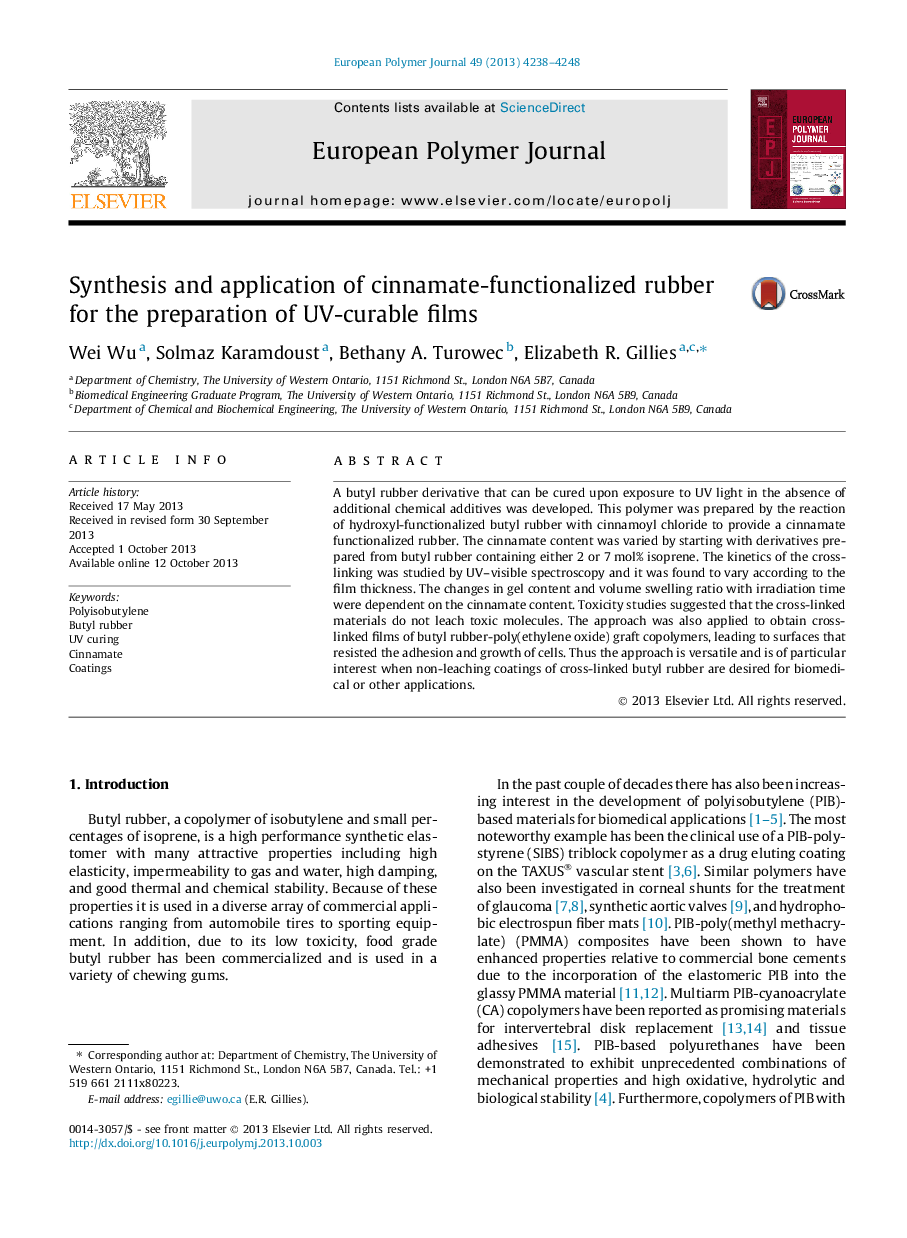| Article ID | Journal | Published Year | Pages | File Type |
|---|---|---|---|---|
| 1401968 | European Polymer Journal | 2013 | 11 Pages |
•Cinnamate functionalized butyl rubber was prepared and cross-linked with UV light.•The kinetics of UV cross-linking differed for thin versus thick films.•Gel content and swelling of films varied with irradiation time and cinnamate content.•The approach was also applied to butyl rubber-PEO graft copolymers with cinnamate.•Cross-linked butyl rubber-PEO graft copolymer films resisted protein adsorption.
A butyl rubber derivative that can be cured upon exposure to UV light in the absence of additional chemical additives was developed. This polymer was prepared by the reaction of hydroxyl-functionalized butyl rubber with cinnamoyl chloride to provide a cinnamate functionalized rubber. The cinnamate content was varied by starting with derivatives prepared from butyl rubber containing either 2 or 7 mol% isoprene. The kinetics of the cross-linking was studied by UV–visible spectroscopy and it was found to vary according to the film thickness. The changes in gel content and volume swelling ratio with irradiation time were dependent on the cinnamate content. Toxicity studies suggested that the cross-linked materials do not leach toxic molecules. The approach was also applied to obtain cross-linked films of butyl rubber-poly(ethylene oxide) graft copolymers, leading to surfaces that resisted the adhesion and growth of cells. Thus the approach is versatile and is of particular interest when non-leaching coatings of cross-linked butyl rubber are desired for biomedical or other applications.
Graphical abstractFigure optionsDownload full-size imageDownload as PowerPoint slide
